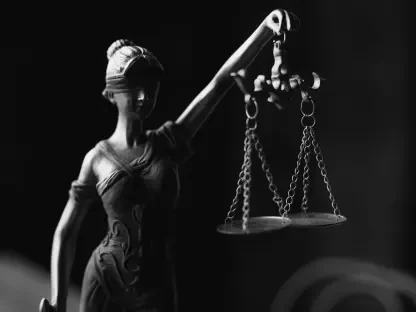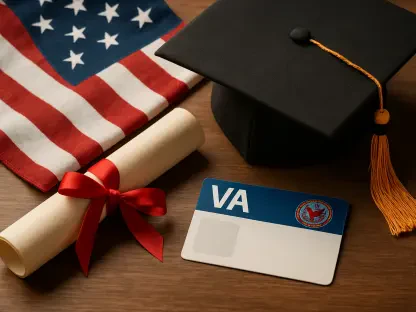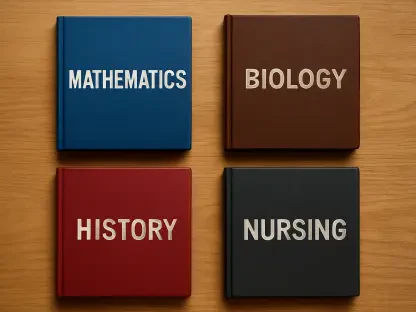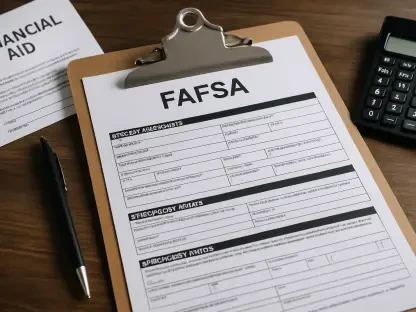In the ever-shifting landscape of higher education, academic freedom stands as a cornerstone for faculty, ensuring they can pursue truth and innovation without fear of reprisal. Yet, a vital but often sidelined group—academic staff, frequently referred to as third-space professionals—remains unprotected despite their significant contributions to the academic mission. These individuals, who straddle the line between administrative and academic roles, include academic advisors, learning center directors, and institutional researchers. Their work directly shapes student success through teaching, curriculum design, and data analysis, yet they lack the safeguards that faculty enjoy. This gap raises pressing questions about fairness and the integrity of higher education itself. Exploring the reasons behind the need for academic freedom for these professionals reveals not only their vulnerabilities but also the broader implications for institutional progress and student outcomes in an increasingly complex educational environment.
Understanding the Role of Third-Space Professionals
Emergence of a Hybrid Workforce
The concept of third-space professionals has gained traction as universities have adapted to changing student needs and institutional demands over recent decades. Since the shift toward open admissions in the 1970s, higher education has increasingly relied on these hybrid roles to support diverse learner populations. Their numbers have expanded with the rise of faculty development programs, community-based learning initiatives, and data-driven student success efforts. These staff members fill a unique niche, blending administrative duties with academic responsibilities, yet they are often miscategorized under broad “staff” labels. This historical evolution underscores a critical oversight: while their roles have grown in importance, the policies protecting their academic contributions have not kept pace. Addressing this discrepancy is essential to ensure that their work, which often mirrors that of faculty, is recognized and safeguarded against external pressures or institutional biases that could hinder their effectiveness.
Beyond their historical rise, third-space professionals represent a response to the modern complexities of higher education. Their presence reflects an institutional acknowledgment that student success requires specialized expertise beyond traditional faculty roles. From guiding students through academic challenges to implementing innovative support programs, these professionals often operate in ambiguous territory where their academic nature is clear but unprotected. This ambiguity can lead to hesitation in performing duties that might challenge institutional norms or administrative priorities. Without the shield of academic freedom, their ability to advocate for evidence-based practices or address systemic issues is compromised. The lack of recognition for their dual role not only undermines their professional standing but also risks diminishing the quality of support provided to students, highlighting a pressing need for policy reform to align with the realities of their contributions.
Impact on Institutional Goals
The contributions of third-space professionals are deeply intertwined with the core mission of higher education—fostering learning and advancing knowledge. They often design tutoring programs, conduct research on retention rates, and develop curricula that directly enhance student outcomes. Despite this, their classification as staff rather than academic personnel frequently excludes them from the protections faculty receive. This misclassification can stifle their ability to innovate or speak candidly about institutional shortcomings, as they fear professional repercussions. Their work, though academic in essence, lacks the structural support needed to thrive in a sometimes politically charged environment. Recognizing their role in achieving institutional goals is a critical step toward ensuring that their efforts are not only valued but also protected, allowing them to contribute fully to the educational landscape without the shadow of potential retaliation.
Moreover, the impact of third-space professionals extends to shaping institutional policies through their unique perspective. Working closely with students, they often identify gaps in support systems or pedagogical approaches before others in the university hierarchy. Their insights could drive meaningful reforms, yet without academic freedom, they may hesitate to voice concerns or propose changes that challenge existing frameworks. This suppression of valuable feedback can hinder institutional growth and adaptability, especially in an era where student needs are increasingly diverse. Protecting their right to engage in open inquiry and advocacy ensures that universities benefit from their frontline observations. Such protection would not only empower these professionals but also strengthen the institution’s ability to respond effectively to emerging challenges, reinforcing the argument for extending academic freedom to this vital workforce segment.
Addressing the Gaps in Academic Freedom Protections
Vulnerabilities in Professional Practice
Third-space professionals face significant risks when academic freedom is absent from their professional toolkit. Their roles often require them to challenge conventional practices or present data that may expose institutional weaknesses, such as equity gaps in student outcomes. Without protections, the fear of retaliation—whether from administrators or faculty—can deter them from acting on evidence or speaking out about critical issues. This vulnerability is particularly acute in environments where campus climates are charged with political or social tensions, making their position even more precarious. The potential for professional consequences not only affects individual staff members but also deprives institutions of honest input that could spur necessary improvements. Ensuring their ability to work without fear is fundamental to maintaining the integrity of academic support systems and fostering an environment where innovation and truth-seeking are prioritized over conformity.
Additionally, the lack of safeguards impacts the day-to-day decisions these professionals make, often forcing them into a cautious approach that undermines their effectiveness. For instance, when designing educational programs or implementing teaching strategies, they may opt for safer, less innovative methods to avoid conflict with administrative priorities. This hesitancy can limit the potential benefits to students who rely on cutting-edge support to succeed. Furthermore, the absence of clear policies leaves them navigating ambiguous boundaries, unsure of how far their academic responsibilities extend before crossing into risky territory. This uncertainty creates a chilling effect, where self-censorship becomes the norm rather than the exception. Extending academic freedom to cover these scenarios would empower third-space professionals to act in the best interest of students and institutions, ensuring that their expertise is fully leveraged to address pressing educational challenges.
Critical Domains Requiring Safeguards
Academic freedom is vital across several dimensions of third-space professionals’ work, including educational decision-making, data interpretation, policy advocacy, and research. In educational decision-making, they must be free to implement strategies grounded in evidence rather than administrative convenience or external pressures. Similarly, when interpreting and reporting data, they need protection to present findings—such as retention issues or equity disparities—without fear of backlash, even if the results paint an unflattering picture of the institution. These areas are not merely job functions but are integral to the academic mission, yet the lack of safeguards often stifles their ability to perform them effectively. Highlighting these domains reveals how deeply the absence of protection permeates their roles, affecting not just their professional security but also the quality of support and insight provided to the broader university community.
Another crucial aspect lies in policy advocacy and research, where third-space professionals are uniquely positioned to drive change due to their direct engagement with students. Advocating for reforms based on firsthand observations of harmful policies or conducting scholarship on institutional effectiveness should not carry the risk of professional repercussions. However, without academic freedom, such efforts can be perceived as insubordination or overstepping boundaries, leading to potential conflicts with higher administration or faculty preferences. This suppression of voice and inquiry undermines the potential for systemic improvement within universities. Protecting these activities ensures that academic staff can contribute to shaping policies and advancing knowledge in ways that align with student needs and institutional goals. Establishing clear safeguards in these domains would foster a culture of openness, allowing these professionals to fulfill their roles without the constant threat of reprisal.
Envisioning a Path Forward for Policy Reform
Designing a Differentiated Policy Structure
To bridge the gap in academic freedom protections, a tailored policy framework for staff roles offers a practical solution. By categorizing staff into distinct groups—academic staff engaged in teaching and research, student life staff focused on co-curricular support, and operational staff handling administrative functions—universities can ensure that those performing academic work receive appropriate safeguards. This structure mirrors the nuanced categories already applied to faculty, such as research or teaching professors, and adapts them to the diverse realities of staff contributions. Such a framework would clarify the scope of protections for third-space professionals, enabling them to engage in free inquiry, advocate for evidence-based changes, and report critical data without fear of retaliation. Implementing this approach represents a logical step toward aligning institutional policies with the evolving nature of higher education roles.
Furthermore, adopting a differentiated policy structure would address the current misalignment between the academic nature of third-space work and the generic staff categorization that often governs it. This misalignment not only overlooks their contributions but also creates inefficiencies in how universities support and evaluate their workforce. By recognizing academic staff as a distinct category deserving of freedom protections, institutions can foster an environment where these professionals feel secure in challenging outdated practices or proposing innovative solutions. This shift would also signal a commitment to fairness, ensuring that all individuals contributing to the academic mission—regardless of title—operate under equitable conditions. The development of such a framework requires collaboration among administrators, faculty, and staff to define clear criteria and protections, but the potential to enhance institutional integrity and student success makes it a worthwhile endeavor.
Building Momentum for Systemic Change
Looking back, the discourse surrounding academic freedom for third-space professionals gained traction as their roles became indispensable to higher education. The historical oversight in policy development was evident when universities expanded these hybrid positions without updating protective frameworks, leaving staff exposed to risks that faculty rarely faced. Efforts to highlight their vulnerabilities were often met with slow institutional responses, as outdated structures struggled to accommodate the nuanced nature of their work. Reflecting on past challenges, it became clear that safeguarding these professionals was not just about individual rights but about preserving the academic integrity of universities. The push for tailored protections was a recognition that their contributions—whether in teaching, data analysis, or policy advocacy—were vital to student success and institutional progress.
Moving forward, the next steps involve actionable reforms to ensure academic freedom extends to all who engage in academic work. Universities must prioritize the development of differentiated policies, starting with pilot programs to test categorizations and protections for academic staff. Engaging stakeholders through forums and task forces can help build consensus on the scope of these safeguards, addressing concerns from all corners of the institution. Additionally, drawing on successful faculty models can provide a blueprint for implementation, ensuring that the transition is both feasible and effective. As higher education continues to evolve, anticipating future shifts in staff roles and student needs will be crucial to maintaining robust protections. Committing to these reforms now lays the groundwork for a more equitable and innovative academic environment, where third-space professionals can thrive without the shadow of professional risk.









